Despite what Putin claims, Russia is way off on what it considers a “military target” because not only in Kyiv, but also Ukraine’s second largest city Kharkiv, civilian areas, such as apartment buildings, parks, and neighborhoods, are being hit by Russian military fire in what looks like deliberate targeting. The huge reported Russian convoy that is said to be 40 miles long, creeps its way closer to Kyiv, like a huge anaconda looking to strike its prey, and once that convoy reaches the city, it will not take long for the Ukrainians fighting there to be overrun. As reported by the AP:
Throughout Ukraine, many civilians spent another night huddled in shelters, basements, or corridors, anywhere that gave protection against Russian civilian targeting
KYIV, Ukraine (AP) — Russian shelling pounded civilian targets in Ukraine’s second-largest city again Tuesday and a 40-mile convoy of tanks and other vehicles threatened the capital — tactics Ukraine’s embattled president said were designed to force him into concessions in Europe’s largest ground war in generations.
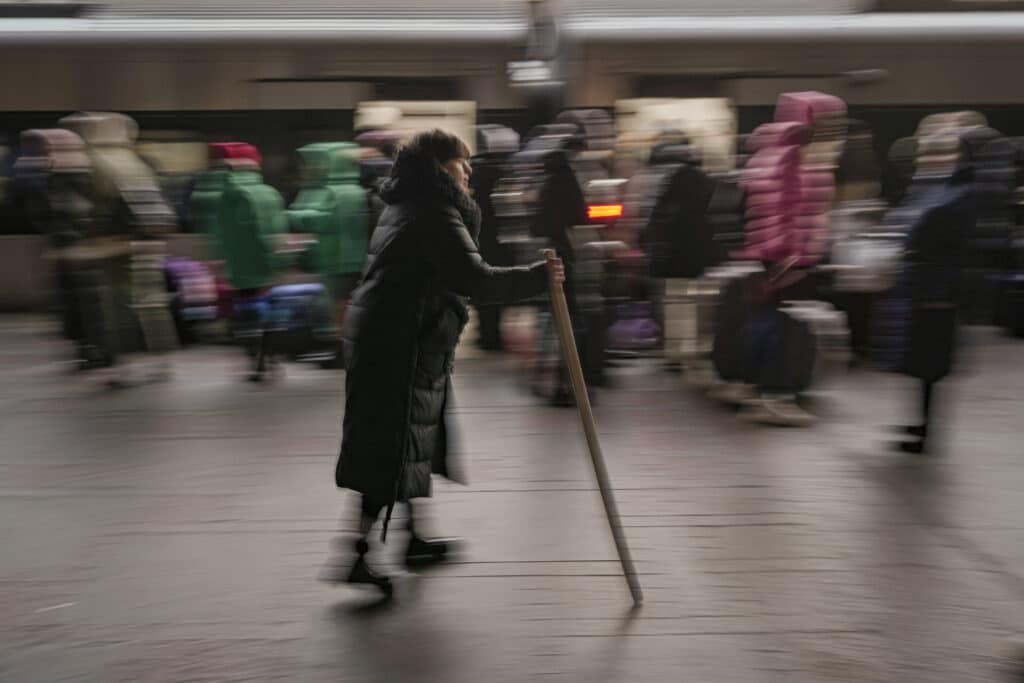
With the Kremlin increasingly isolated by tough economic sanctions that have tanked the ruble currency, Russian troops attempted to advance on Ukraine’s two biggest cities. In strategic Kharkiv, an eastern city with a population of about 1.5 million, videos posted online showed explosions hitting the region’s Soviet-era administrative building and residential areas.
Ukrainian President Volodymyr Zelenskyy called the attack on Kharkiv’s main square “frank, undisguised terror,” blaming a Russian missile and calling it a war crime. “Nobody will forgive. Nobody will forget. … This is state terrorism of the Russian Federation.”
Throughout Ukraine, many civilians spent another night huddled in shelters, basements, or corridors.
The casualty toll mounted as Ukraine faced Day 6 of a Russian invasion that has shaken the 21st century world order. Hopes for a negotiated solution to the war dimmed after a first, five-hour session of talks between Ukraine and Russia yielded no stop in the fighting, though both sides agreed to another meeting in coming days.
With Western powers sending weapons to Ukraine and driving a global squeeze of Russia’s economy, President Vladimir Putin’s options diminished as he seeks to redraw the global map — and pull Ukraine’s western-leaning democracy back into Moscow’s orbit.
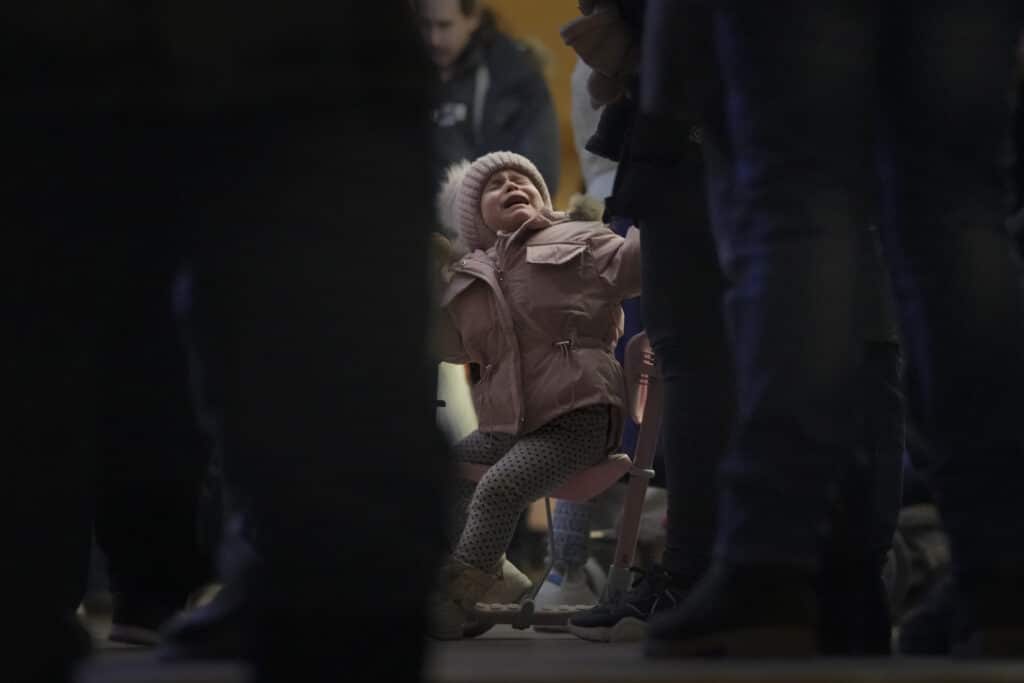
“I believe Russia is trying to put pressure (on Ukraine) with this simple method,” Zelenskyy said late Monday in a video address, referring to stepped-up shelling. He did not offer details of the talks between Ukrainian and Russian envoys, but he said Kyiv was not prepared to make concessions “when one side is hitting another with rocket artillery.”
As the talks along the Belarusian border wrapped up, several blasts could be heard in the capital, and Russian troops advanced on the city of nearly 3 million. The convoy of armored vehicles, tanks, artillery and support vehicles was 25 kilometers (17 miles) from the center of the city and stretched about 65 kilometers (40 miles), according to satellite imagery from Maxar Technologies.
“They want to break our nationhood, that’s why the capital is constantly under threat,” Zelenskyy said, saying that it was hit by three missile strikes on Monday and that hundreds of saboteurs were roaming the city.
Kharkiv, near the Russian border, is another key target. One after the other, explosions burst through a residential area of the city in one video verified by AP. In the background, a man pleaded with a woman to leave, and a woman cried.
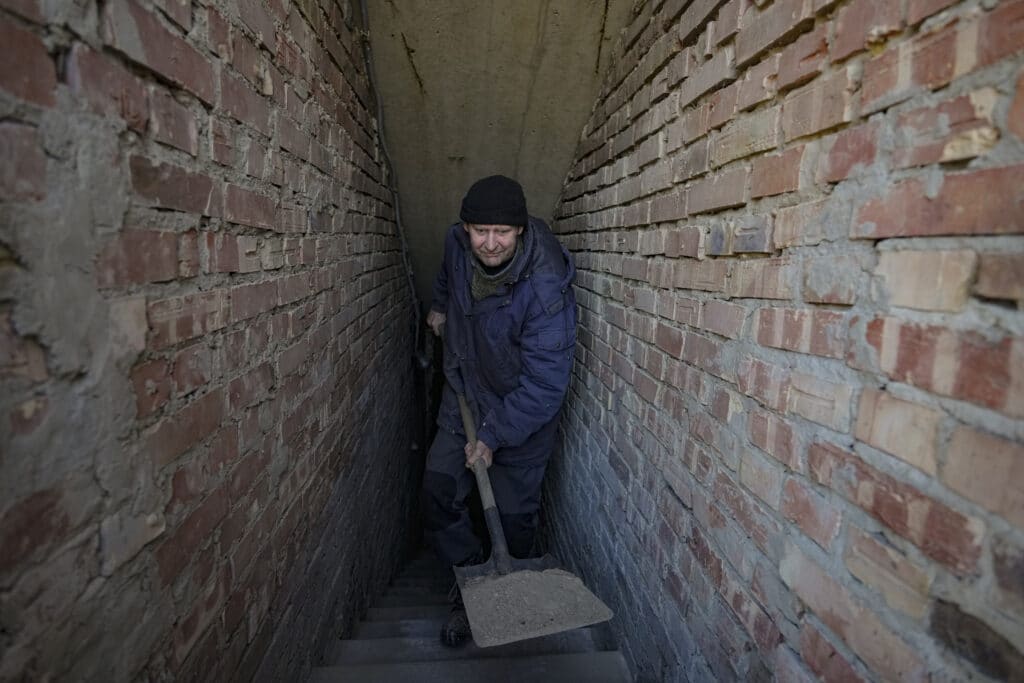
Determined for life to go on despite the shelling, hospital workers transferred a Kharkiv maternity ward to a bomb shelter. Amid makeshift electrical sockets and mattresses piled up against the walls, pregnant women paced the crowded space, accompanied by the cries of dozens of newborns.
The Russian military has denied targeting residential areas despite abundant evidence documented by AP reporters around Ukraine of shelling of homes, schools, and hospitals.
The International Criminal Court chief prosecutor has said he plans to open a Ukraine investigation and is monitoring the conflict.
Regional administration chief Oleh Sinehubov said that the administration headquarters in the city center also came under Russian shelling. Images posted online showed the building’s facade and interior badly damaged by a powerful explosion that also blew up part of its roof. The state emergencies agency said that attack wounded six people, including a child.
Sinehubov said that at least 11 people were killed, and scores of others were wounded during Monday’s shelling of the city.
Meanwhile, flames shot up from a military base northeast of Kyiv, in the suburb of Brovary, in footage shot from a car driving past. In another video verified by AP, a passenger pleads with the driver, “Misha, we need to drive quickly as they’ll strike again.”
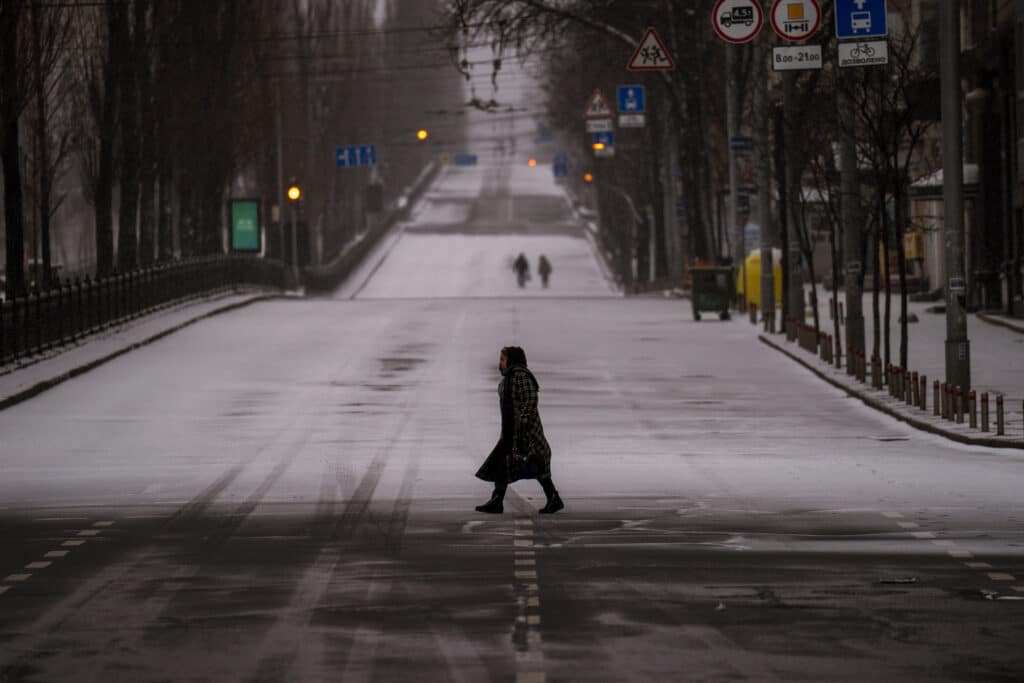
And Ukrainian authorities released details and photos of an attack Sunday on a military base in Okhtyrka, a city between Kharkiv and Kyiv, saying more than 70 Ukrainian soldiers were killed along with some local residents. The attack could not be immediately confirmed.
The Russian military’s movements have been stalled by fierce resistance on the ground and a surprising inability to dominate Ukraine’s airspace.
In the face of that resistance, the Kremlin has twice in as many days raised the specter of nuclear war and put on high alert an arsenal that includes intercontinental ballistic missiles and long-range bombers. Stepping up his rhetoric, President Vladimir Putin denounced the United States and its allies as an “empire of lies.”
Western nations have increased weapons shipments to Ukraine to help its forces defend themselves — but have so far ruled out sending in troops. Still, the embattled country moved to solidify its ties to the West by applying to join the European Union — a largely symbolic move for now, but one that won’t sit well with Putin, who was already infuriated by Ukraine’s desire to join the NATO alliance.
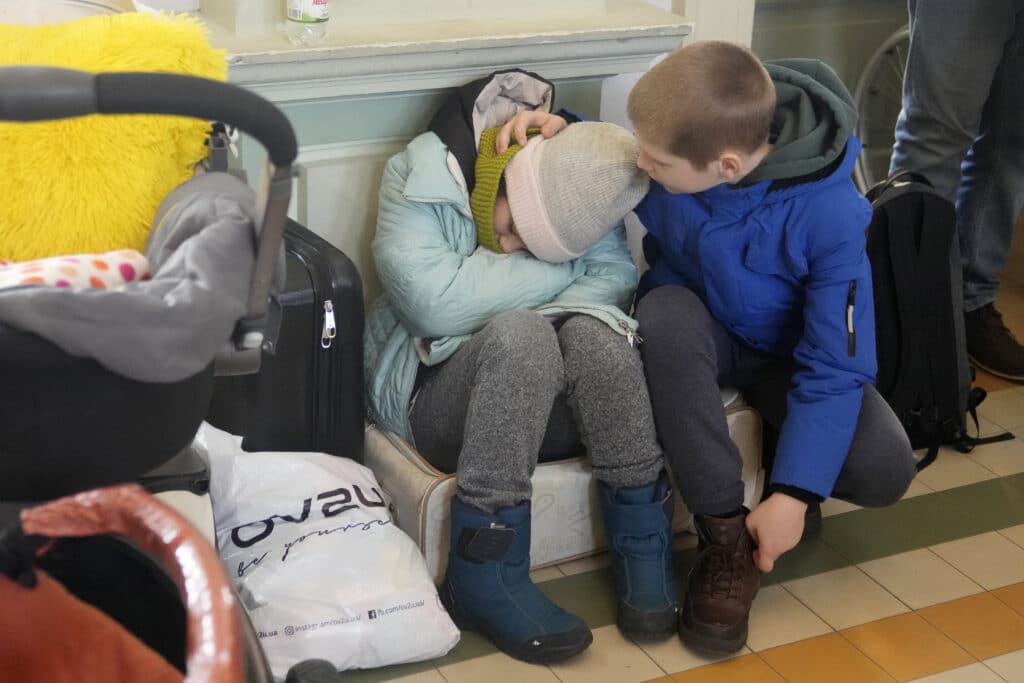
Messages aimed at the advancing Russian soldiers popped up on billboards, bus stops and electronic traffic signs across the capital. Some used profanity to encourage Russians to leave. Others appealed to their humanity.
“Russian soldier — Stop! Remember your family. Go home with a clean conscience,” one read.
Fighting raged in other towns and cities. The strategic port city of Mariupol, on the Sea of Azov, is “hanging on,” said Zelenskyy adviser Oleksiy Arestovich. An oil depot was reported bombed in the eastern city of Sumy.
In the seaside resort town of Berdyansk, dozens of protesters chanted angrily in the main square against Russian occupiers, yelling at them to go home and singing the Ukrainian national anthem. They described the soldiers as exhausted young conscripts.
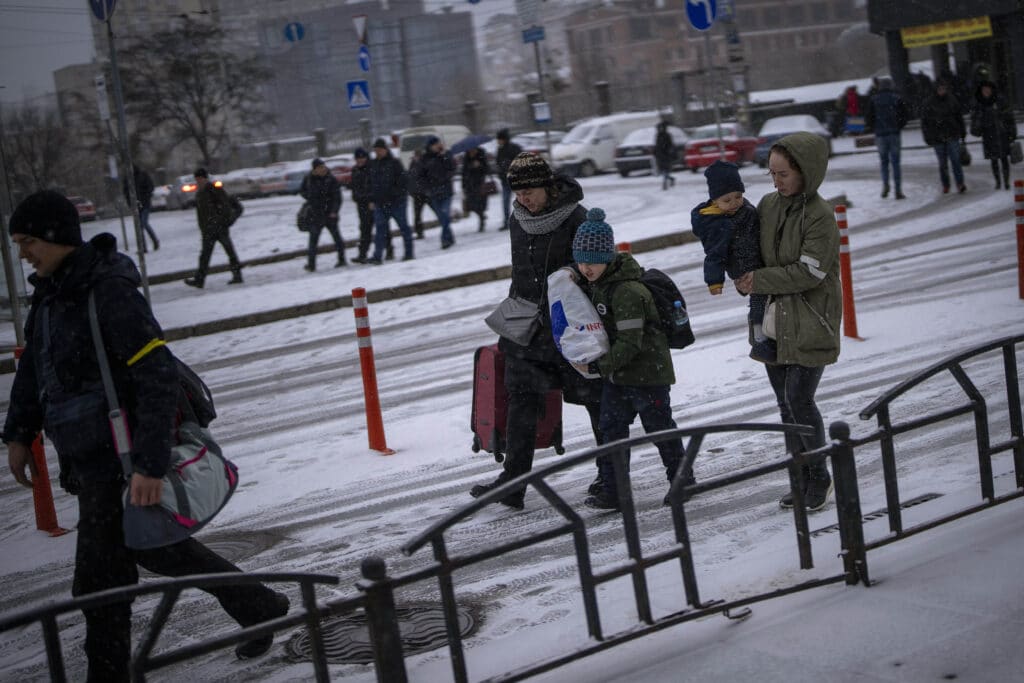
“Frightened kids, frightened looks. They want to eat,” Konstantin Maloletka, who runs a small shop, said by telephone. He said the soldiers went into a supermarket and grabbed canned meat, vodka and cigarettes.
“They ate right in the store,” he said. “It looked like they haven’t been fed in recent days.”
For many, Russia’s announcement of a nuclear high alert stirred fears that the West could be drawn into direct conflict with Russia. But a senior U.S. defense official, speaking on condition of anonymity, said the United States had yet to see any appreciable change in Russia’s nuclear posture.
As far-reaching Western sanctions on Russian banks and other institutions took hold, the ruble plummeted, and Russia’s Central Bank scrambled to shore it up, as did Putin, signing a decree restricting foreign currency.
But that did little to calm Russian fears. In Moscow, people lined up to withdraw cash as the sanctions threatened to drive up prices and reduce the standard of living for millions of ordinary Russians.
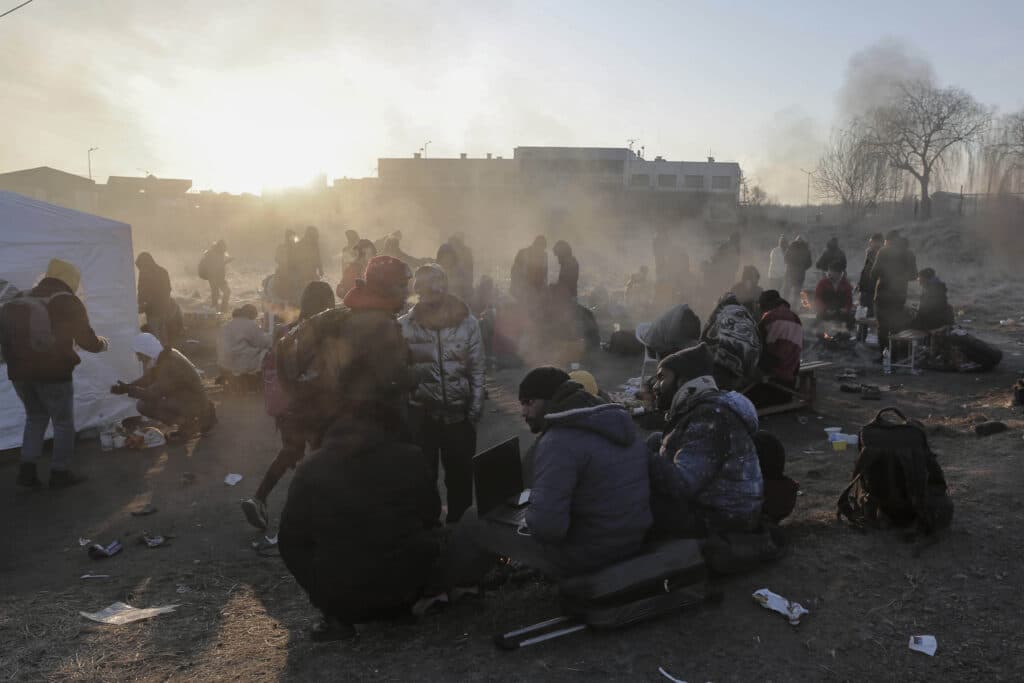
The economic sanctions, ordered by the U.S. and other allies, were just one contributor to Russia’s growing status as a pariah country.
Russian airliners are banned from European airspace, Russian media is restricted in some countries, and some high-tech products can no longer be exported to the country. On Monday, international sports bodies moved to exclude Russian athletes and officials from international events, including soccer’s World Cup.
The U.N. human rights chief said Monday at least 102 civilians have been killed and hundreds wounded — warning that figure is probably a vast undercount.
More than a half-million people have fled the country since the invasion, another U.N. official said, many of them going to Poland, Romania, and Hungary.
Among the refugees in Hungary was Maria Pavlushko, 24, an information technology project manager from a city west of Kyiv. She said her father stayed behind to fight the Russians.
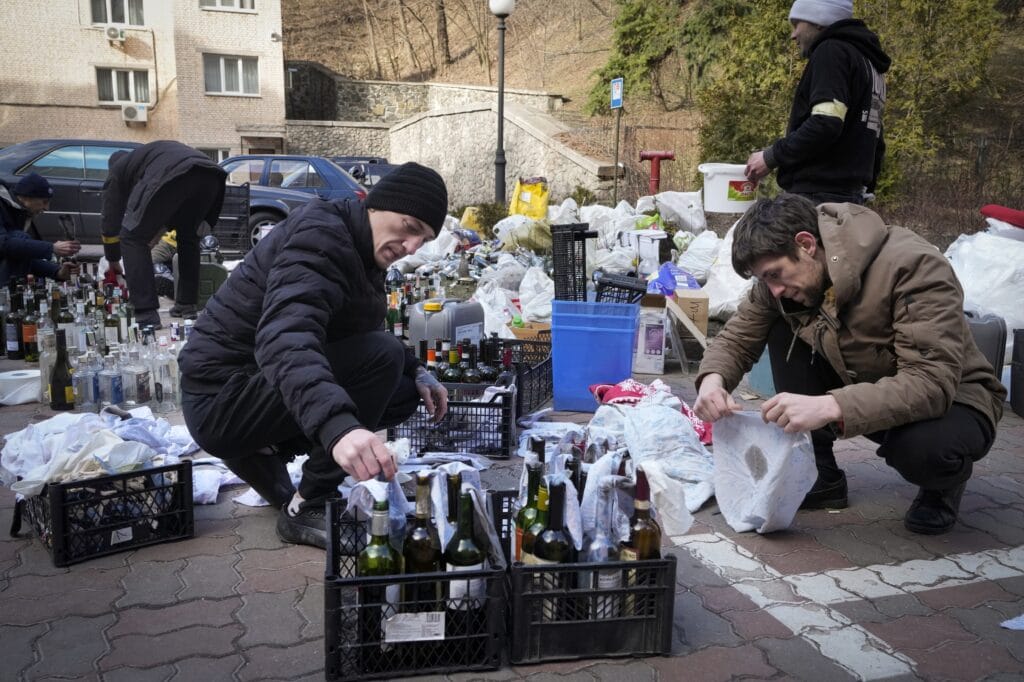
“I am proud about him,” she said, adding that many of her friends were planning to fight, too.
By YURAS KARMANAU, JIM HEINTZ, VLADIMIR ISACHENKOV and DASHA LITVINOVA
Isachenkov and Litvinova reported from Moscow. Robert Burns and Eric Tucker in Washington; Francesca Ebel, Josef Federman and Andrew Drake in Kyiv; Lorne Cook in Brussels; and other journalists from around the world contributed to this report.






